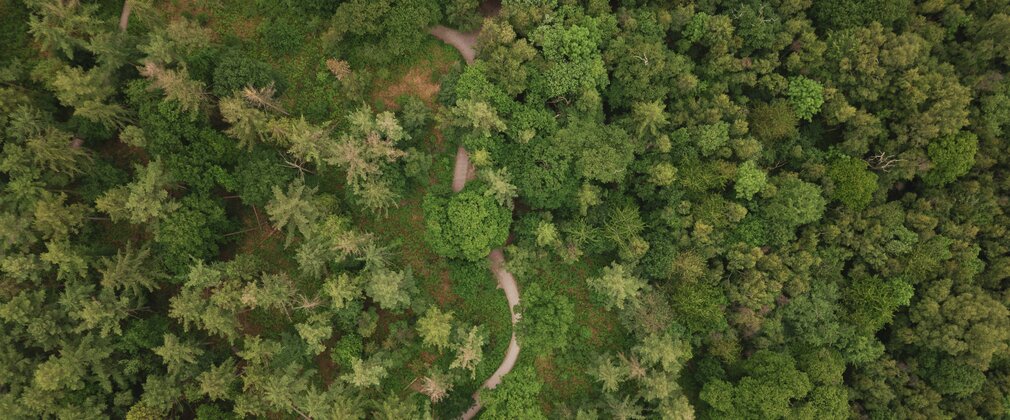
Monday 10 November 2025
Forestry England’s new resilience strategy will safeguard the nation’s forests for centuries
Forestry England is today launching a new strategy and action plan which will protect the nation’s forests against the multiple threats they face. Three key principles of assessing, diversifying and restoring will guide foresters across the organisation so the 1,500 forests and woodlands in their care are fit for the future. As the combined effects of the climate crisis, biodiversity collapse, and tree pests and diseases put the nation’s forests at ever greater risk, the science-led strategy sets out a bold approach to forest management.
Built on decades of experience across Forestry England, the strategy brings together innovative work already underway on nature recovery, timber production and silviculture. It outlines three key principles which will guide action across the organisation so the nation’s forests can be more productive, withstand disturbance, and give greater value to society. With the nation’s forests currently contributing 40% of England’s domestic wood supply to the market, resilient forests are crucial in having a secure future timber supply.
These three principles are:
- Assessing forest resilience at a local level to understand the unique character and potential of every woodland. This will include rigorous analysis of the local environment, soils, climate projections, past management and the surrounding landscape and connectivity.
- Diversifying tree species, genetic foundations and forest structures to reduce vulnerability to pests, diseases and extreme weather. Forestry England will use varied management approaches including low-intensity management, continuous-cover forestry, and even-aged forest stands.
- Restoring ecological foundations to nurture the wider ecosystems of forests and woodlands, recognising that biodiverse forests are healthy forests. Teams will focus on species groups and habitats that have the biggest effects on ecosystem function such as soil health, fungi networks, and keystone species like beavers.
The strategy follows an horizon scan research project that Forestry England carried out two years ago with University of Cambridge, which identified the biggest opportunities and challenges over the next 50 years for UK woodlands. This research raised the possibility of catastrophic ecosystem collapse in UK woodlands in the next half century without decisive action. Today’s publication of the resilience strategy details the work Forestry England will do to meet the challenges ahead.
Dr Eleanor Tew, Forestry England Head of Forest Planning, said:
“Every aspect of our work depends on healthy forests and without them we lose everything. The value of the nation’s forests is enormous. They are beautiful, inspiring places for millions of people to enjoy; provide critical homes for wildlife; and they supply high-quality, sustainable timber. We all depend on these benefits, so forest resilience is our single, biggest challenge.
“Each forest and woodland in our care is a complex, interconnected ecosystem, and every part needs to thrive. Our resilience strategy reflects this interdependence, setting out how teams’ work right across our organisation will focus on forest resilience. We’ve based it on the best available science and years of experience and innovation. With this approach, we can give the nation’s forests the best chance to adapt and thrive in the centuries ahead.”
Last week Forestry England published its list of 30 priority tree species which is now guiding production and planting decisions across the nation’s forests. The list is based on scientific analysis and the species selected will best adapt to climate change, resist pests and diseases and provide commercial timber in the decades ahead. The tree species list is part of the wider resilience strategy announced today, providing a clear framework for species diversity as forests are planned, planted and restocked.
The strategy is available to read on Forestry England’s website together with a film about the forest resilience approach.
Notes to Editor
- Images are available here. Please credit Forestry England/Crown copyright.
- Forestry England manages and cares for the nation’s 1,500 woods and forests, with over 313 million visits in 2024/25. As England’s largest land manager, we shape landscapes and enhance forests for people to enjoy, wildlife to flourish and businesses to grow. We are continuing the work we have already started to make the nation’s forests resilient to climate change and by 2026 we will:
- create at least 6,000 more hectares where we integrate wilding activities in our productive forests
- increase the diversity of visitors to the nation’s forests and have one million hours of high-quality volunteer time given to the nation’s forests
- plant at least 2,000 hectares of new, high-quality woodlands
For more information visit forestryengland.uk. Forestry England is an agency of the Forestry Commission.
Media contact:
Naomi Fuller, Media Relations Officer | media@forestryengland.uk |
